Are you ready to elevate your forex trading game? Imagine harnessing the power of one of the most dynamic currency pairs in the market—EUR/GBP. Whether you’re an experienced trader seeking to refine your strategies or a newcomer eager to navigate the forex landscape, understanding what EUR/GBP is in forex is crucial for maximizing your trading potential. Partnering with a regulated forex broker can further enhance your experience, ensuring a secure and efficient trading environment. This comprehensive guide delves deep into the intricacies of the EUR/GBP currency pair, unraveling its significance, the factors that influence its exchange rate, historical trends, effective trading strategies, and much more. By the end of this article, you’ll be equipped with the knowledge and insights necessary to make informed and profitable trading decisions in the EUR/GBP forex market.
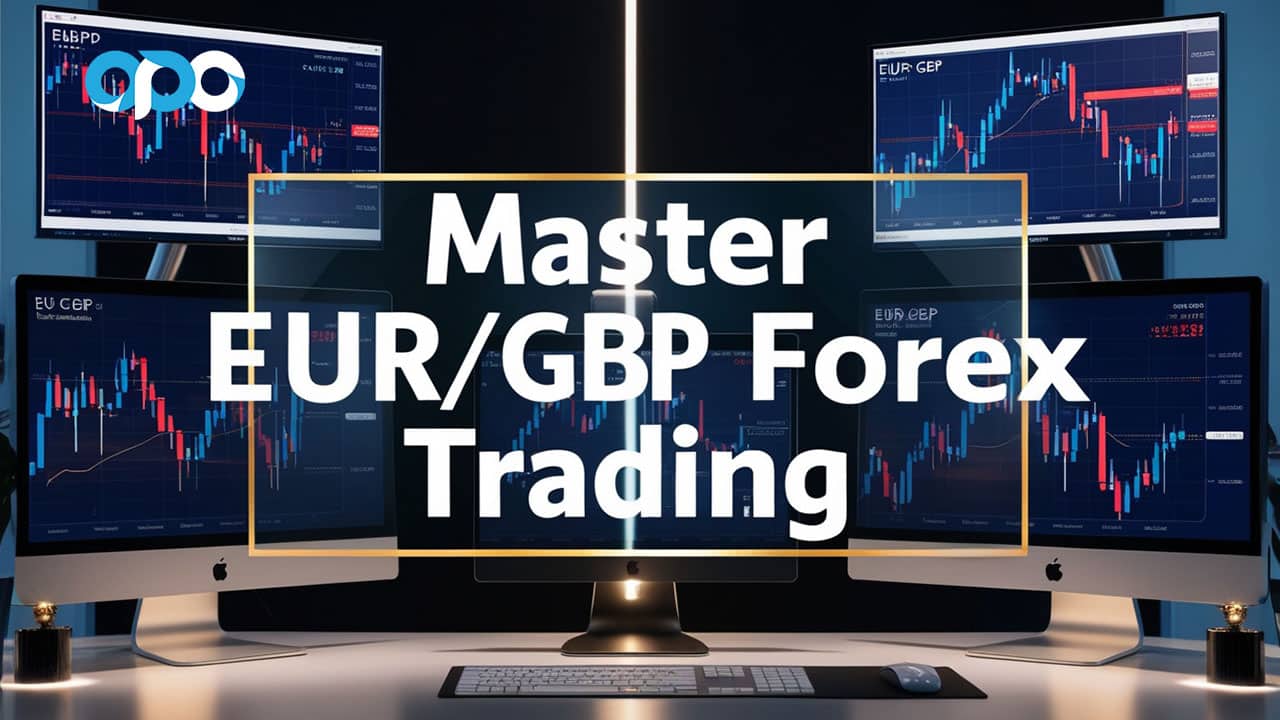
What is EUR/GBP?
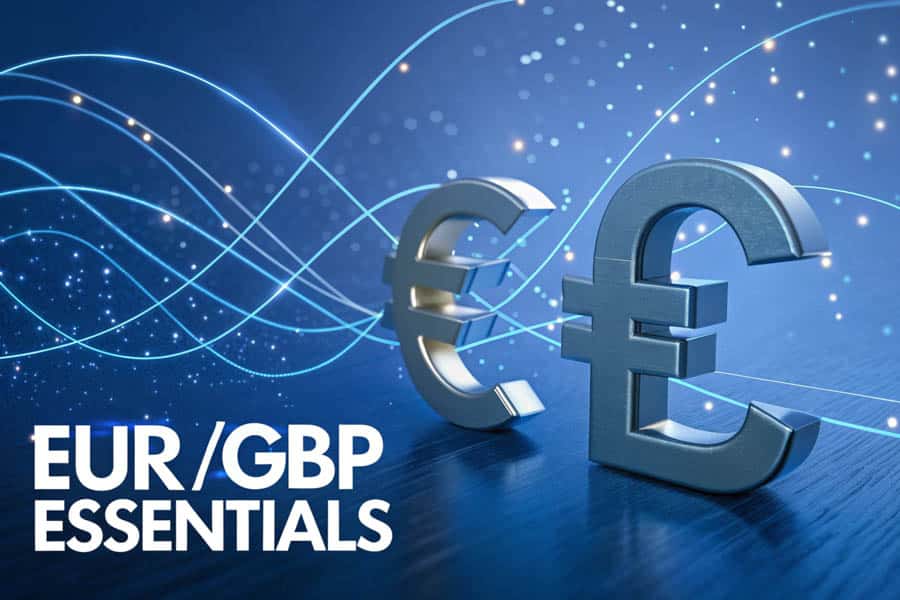
The EUR/GBP currency pair is a cornerstone in the forex trading world, representing the exchange rate between the Euro (EUR) and the British Pound Sterling (GBP). This pair is a direct measure of how many British Pounds one Euro can purchase. For example, if the EUR/GBP exchange rate is 0.8500, it means that 1 Euro is equivalent to 0.85 British Pounds.
Understanding the EUR and GBP
The Euro is the official currency of the Eurozone, which includes 20 of the 27 European Union (EU) member countries. The Eurozone represents one of the largest economic regions in the world, making the Euro a significant player in global forex markets. On the other hand, the British Pound, often referred to as Pound Sterling, is the official currency of the United Kingdom. It is one of the oldest currencies still in use and holds substantial value and stability in the forex market.
Both the Euro and the Pound are among the most traded currencies globally, contributing to the EUR/GBP pair’s high liquidity and volatility. This liquidity ensures that traders can enter and exit positions with ease, while volatility presents opportunities for profit through price movements.
Understanding the dynamics of the EUR/GBP pair is essential for traders aiming to leverage its potential in forex trading. The interplay between these two robust currencies reflects broader economic indicators, political events, and market sentiments that influence their exchange rate.
Significance of EUR/GBP in Forex Trading

The EUR/GBP pair is not just another currency pair in the forex market; it holds significant importance due to several factors that make it a favorite among traders.
A Mirror of European Economies
The EUR/GBP pair is a direct reflection of the economic health and stability of two of Europe’s most influential economies: the Eurozone and the United Kingdom. Movements in this pair often mirror the economic conditions, monetary policies, and political climates of these regions. For instance, strong economic growth in the Eurozone or the UK can lead to a strengthening of the respective currency, impacting the EUR/GBP exchange rate.
High Liquidity and Volatility
One of the key reasons why EUR/GBP is highly regarded in forex trading is its liquidity. High liquidity means that the currency pair can be bought and sold in large volumes without causing significant price movements. This liquidity is particularly beneficial for traders as it allows for easier entry and exit from trades, reducing the risk of slippage.
Moreover, EUR/GBP is known for its volatility, which refers to the frequency and magnitude of price movements. While volatility can increase the risk of trading, it also presents ample opportunities for traders to capitalize on price fluctuations. Understanding the factors that drive this volatility is crucial for developing effective trading strategies.
Influence on Global Markets
The EUR/GBP exchange rate has far-reaching implications beyond the forex market. Businesses engaged in trade between the Eurozone and the UK are directly affected by fluctuations in this pair, as it impacts import and export costs, pricing strategies, and overall profitability. Additionally, central banks and policymakers monitor the EUR/GBP rate closely when making decisions that influence monetary policies, thereby affecting global economic conditions.
For traders, the significance of EUR/GBP extends to its impact on investment portfolios and hedging strategies. By effectively trading this pair, investors can manage currency risk and enhance the performance of their international investments.
Read More: Cross Currency Pairs in forex
Factors Influencing EUR/GBP Exchange Rates

Understanding the factors that influence the EUR/GBP exchange rate is essential for making informed trading decisions. Several key elements drive the fluctuations in this currency pair, each contributing to its dynamic nature.
Economic Indicators
Economic indicators are critical in shaping the EUR/GBP exchange rate. These indicators provide insights into the economic health and performance of the Eurozone and the UK, influencing investor confidence and currency strength.
- Interest Rates: Central banks, namely the European Central Bank (ECB) and the Bank of England (BoE), set interest rates that play a pivotal role in determining the value of the Euro and the Pound. Higher interest rates generally attract foreign investment, leading to an appreciation of the currency. Conversely, lower interest rates can result in depreciation as investors seek higher returns elsewhere.
- Gross Domestic Product (GDP) Growth: GDP growth rates are a fundamental indicator of economic performance. Robust GDP growth in the Eurozone or the UK signals a strong economy, boosting investor confidence and strengthening the respective currency. Conversely, sluggish or negative GDP growth can weaken the currency.
- Inflation Rates: Inflation measures the rate at which the general level of prices for goods and services rises. Moderate inflation is typically seen as a sign of a healthy economy, but high inflation erodes purchasing power and can lead to a decrease in currency value. Both the ECB and BoE monitor inflation closely to adjust monetary policies accordingly.
Political Events
Political stability and events significantly impact the EUR/GBP exchange rate. Political uncertainty or instability can lead to increased volatility as traders react to potential changes in economic policies and regulations.
- Brexit: The UK’s decision to leave the European Union has had a profound and lasting impact on the EUR/GBP pair. Negotiations, trade agreements, and policy changes related to Brexit continue to influence market sentiment and exchange rates.
- Elections and Referendums: National elections or referendums in either the Eurozone or the UK can introduce uncertainty, affecting currency values. Policy shifts resulting from these political events can lead to significant movements in the EUR/GBP exchange rate.
- Geopolitical Tensions: Conflicts, trade disputes, and other geopolitical tensions can create instability, leading to increased risk aversion among investors. This, in turn, affects the demand for safe-haven currencies and influences the EUR/GBP rate.
Market Sentiment
Market sentiment, driven by trader psychology and collective behavior, plays a crucial role in short-term movements of the EUR/GBP exchange rate. Positive news, such as strong economic data or favorable policy announcements, can boost investor confidence and strengthen the Euro or Pound. Conversely, negative news can lead to decreased confidence and a weaker currency.
- Speculative Activities: Traders often engage in speculative activities based on their expectations of future economic conditions or political developments. These speculative trades can amplify price movements, contributing to the pair’s volatility.
- Risk Appetite: The overall risk appetite in the market influences the EUR/GBP pair. During periods of high risk appetite, investors may favor higher-yielding currencies, while during risk-off periods, they may seek safe-haven assets, affecting the exchange rate.
Read More: Types of Currency Pairs in Forex
Technical Factors
Technical factors, such as support and resistance levels, trendlines, and chart patterns, also influence the EUR/GBP exchange rate. Traders use technical analysis to identify these patterns and make informed trading decisions based on historical price movements.
- Moving Averages: Moving averages help smooth out price data to identify the direction of the trend. Crossovers of short-term and long-term moving averages can signal potential entry or exit points.
- Fibonacci Retracements: Fibonacci retracement levels are used to identify potential support and resistance levels based on the mathematical relationships within the Fibonacci sequence. These levels can indicate where the price might reverse or consolidate.
- Volume Indicators: Volume indicators measure the number of units traded in a given period, providing insights into the strength of a price movement. High trading volumes during a price move confirm the trend’s strength, while low volumes may indicate a lack of conviction.
Historical Overview of EUR/GBP
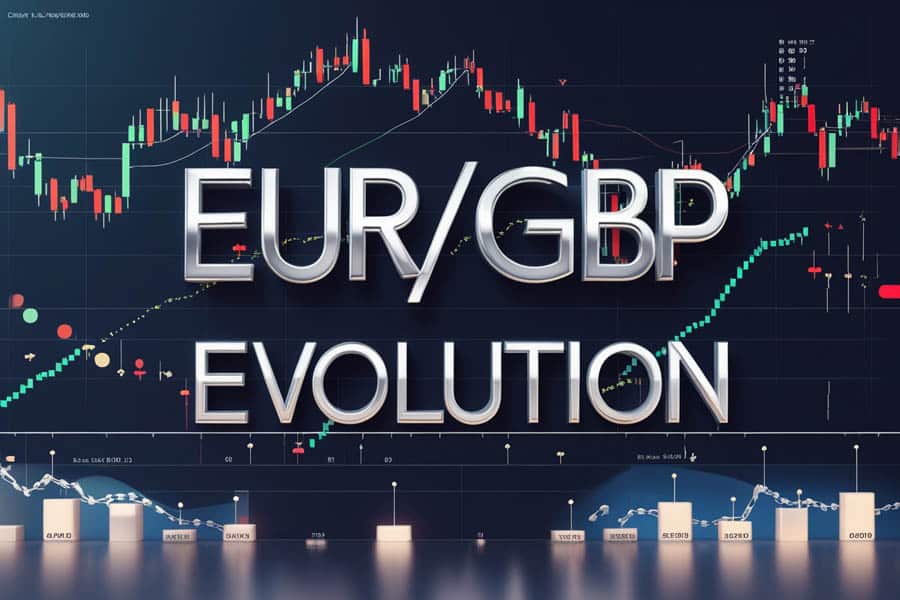
The EUR/GBP currency pair has a rich and dynamic history, shaped by significant economic, political, and global events. Understanding its historical context provides valuable insights into its current behavior and potential future movements.
Evolution of the Pair
The EUR/GBP pair was introduced following the creation of the Euro in 1999. Prior to the Euro, the Eurozone countries traded using their national currencies, which often led to complexities and inefficiencies in the forex market. The adoption of the Euro streamlined these processes, making EUR/GBP a prominent pair in the forex trading landscape.
Major Impact Events
Several key events have had a lasting impact on the EUR/GBP exchange rate, driving its volatility and shaping its trajectory over the years.
- Brexit Referendum (2016): One of the most significant events affecting EUR/GBP was the UK’s referendum to leave the European Union. The unexpected outcome led to immediate and substantial volatility as traders grappled with the uncertainty surrounding the UK’s economic and political future. The aftermath saw prolonged periods of fluctuation as negotiations and policy adjustments continued.
- European Debt Crisis (2010-2012): The Eurozone faced a severe debt crisis during this period, particularly affecting countries like Greece, Italy, and Spain. The crisis undermined confidence in the Euro, leading to a weakening of the EUR/GBP pair. The uncertainty around the ECB’s measures to address the crisis further contributed to market volatility.
- COVID-19 Pandemic (2020): The global pandemic disrupted economies worldwide, including the Eurozone and the UK. Both regions implemented unprecedented fiscal and monetary measures to support their economies, influencing the EUR/GBP exchange rate. The pandemic-induced uncertainty and varying recovery rates between the Eurozone and the UK led to significant fluctuations in the pair.
- ECB and BoE Policy Shifts: Changes in monetary policy by the ECB and the BoE, such as interest rate adjustments and quantitative easing measures, have directly impacted the EUR/GBP exchange rate. For instance, divergent policies between the two central banks can lead to a widening or narrowing of the exchange rate.
Long-Term Trends
Over the long term, the EUR/GBP pair has exhibited trends influenced by economic cycles, structural changes in the economies, and evolving geopolitical landscapes. Understanding these long-term trends helps traders anticipate potential future movements and develop strategies aligned with broader market directions.
- Economic Integration: The deepening economic integration within the Eurozone and the UK’s evolving relationship with the EU have influenced the stability and strength of the EUR and GBP. Policies promoting economic cooperation or fostering competition can impact the exchange rate dynamics.
- Technological Advancements: Advances in trading technology and increased access to real-time data have enhanced market efficiency and liquidity for the EUR/GBP pair. High-frequency trading and algorithmic strategies have become more prevalent, contributing to the pair’s liquidity and volatility.
Read More: Best Currency Pairs to Trade in London Session
Trading Strategies for EUR/GBP
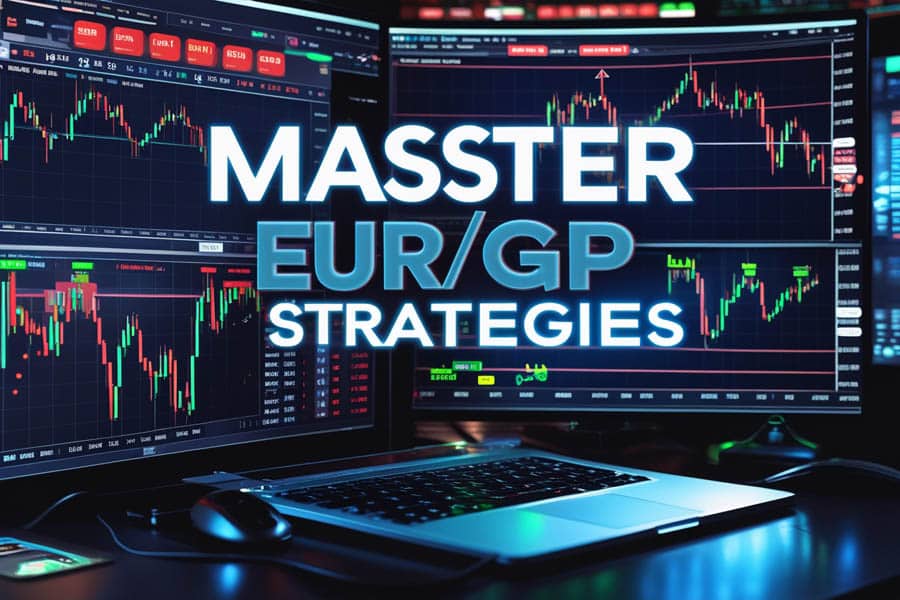
Successfully trading the EUR/GBP pair requires a strategic approach tailored to its unique characteristics. Various trading strategies can be employed to capitalize on the pair’s volatility and liquidity, each suited to different trading styles and risk appetites.
Scalping
Scalping is a high-frequency trading strategy that involves making numerous small trades to capture minor price movements. Given the EUR/GBP pair’s liquidity, scalpers can execute trades quickly and efficiently, especially during periods of high volatility such as the London trading session.
- Pros: Scalping allows traders to accumulate profits steadily with low-risk positions, minimizing exposure to market fluctuations.
- Cons: It requires a high level of focus, quick decision-making, and the ability to execute trades rapidly. Transaction costs can also accumulate due to the high number of trades.
Swing Trading
Swing trading focuses on capturing larger price swings over several days or weeks. Traders utilizing this strategy analyze technical indicators and market trends to identify optimal entry and exit points for the EUR/GBP pair.
- Pros: Swing trading balances the need for active management with the potential for significant profits from medium-term trends.
- Cons: It requires patience and the ability to withstand short-term volatility. Market reversals can impact the profitability of swing trades.
Carry Trading
Carry trading exploits the interest rate differential between the Euro and the Pound. Traders may borrow in a currency with a lower interest rate and invest in one with a higher rate, profiting from the interest rate differential.
- Pros: Carry trading can generate steady returns through interest rate differentials, especially in stable economic conditions.
- Cons: It is susceptible to exchange rate fluctuations, which can negate the gains from interest rate differentials if the currency moves unfavorably.
Trend Following
Trend following involves identifying and following existing market trends. By analyzing moving averages and trendlines, traders can position themselves to benefit from sustained movements in the EUR/GBP exchange rate.
- Pros: This strategy aligns with the market momentum, increasing the likelihood of profitable trades during strong trends.
- Cons: Trend reversals can lead to significant losses if not identified promptly. It requires disciplined adherence to the trading plan.
Breakout Trading
Breakout trading focuses on entering the market when the price breaks through established support or resistance levels. The idea is to capitalize on the increased volatility and momentum that often follows a breakout.
- Pros: Breakout trading can lead to substantial profits if the price continues in the breakout direction.
- Cons: False breakouts can result in losses, making it essential to confirm breakouts with additional indicators or volume analysis.
Best Times to Trade EUR/GBP
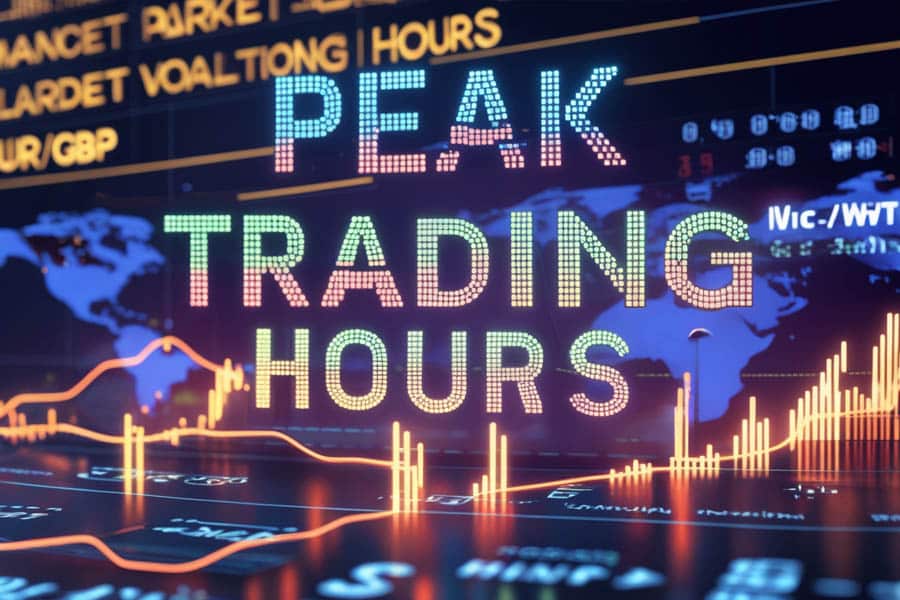
Timing is a critical factor in forex trading, and understanding the best times to trade the EUR/GBP pair can significantly enhance your trading performance. The pair’s liquidity and volatility vary throughout the day, influenced by global trading sessions and economic news releases.
London Trading Session
The London trading session is the most active period for EUR/GBP trading, offering high liquidity and significant price movements. This session overlaps with the European market hours, ensuring ample trading opportunities and tighter spreads. The high activity during the London session is driven by the presence of major financial institutions and traders from Europe and the UK.
- Optimal Trading Hours: The peak activity occurs between 8:00 AM and 12:00 PM GMT, coinciding with the opening of the London market.
- Benefits: Enhanced liquidity reduces the risk of slippage, while increased volatility provides more trading opportunities.
Economic News Releases
Timing trades around major economic news releases can be advantageous, as these events often lead to increased volatility and significant price movements in the EUR/GBP pair. Key news releases to monitor include GDP reports, interest rate decisions, employment data, and inflation figures from the Eurozone and the UK.
- Scheduled News Releases: Utilize economic calendars to track the timing of important news events.
- Impact on Trading: Anticipate increased volatility during and immediately after news releases, which can create both opportunities and risks.
Avoiding Low Liquidity Periods
Trading during low liquidity periods, such as weekends or late US trading hours, can result in wider spreads and less favorable trading conditions. Lower liquidity can lead to increased slippage and reduced trading opportunities, making it less ideal for executing trades.
- Best Practices: Focus on trading during peak hours, particularly the London session, to maximize liquidity and minimize trading costs.
- Risks: Avoid trading during low liquidity times to reduce the likelihood of unfavorable price movements and execution issues.
Seasonal Patterns
Seasonal patterns and recurring market behaviors can also influence the best times to trade EUR/GBP. For example, certain months may exhibit higher volatility due to recurring economic events or historical trends. Analyzing seasonal data can help traders anticipate periods of increased activity and adjust their strategies accordingly.
Risks and Considerations in Trading EUR/GBP
While the EUR/GBP pair offers numerous trading opportunities, it also comes with inherent risks that traders must navigate carefully. Understanding these risks and implementing effective risk management strategies is essential for long-term success in forex trading.
Market Volatility
The EUR/GBP pair is known for its volatility, which can present both opportunities and risks. While volatility can lead to significant profits through price movements, it also increases the potential for substantial losses if trades move against the trader’s position.
- Risk Mitigation: Implementing stop-loss orders and setting appropriate position sizes can help manage the risks associated with volatility.
- Strategy Adaptation: Adjust trading strategies to account for different volatility levels, such as using tighter stops during high volatility periods.
Leverage Risks
Forex trading often involves leveraging, which allows traders to control larger positions with a smaller amount of capital. While leverage can amplify gains, it also magnifies losses, potentially leading to significant financial losses.
- Responsible Use of Leverage: Use leverage cautiously and understand the implications of margin calls. Avoid over-leveraging, which can lead to excessive risk exposure.
- Risk Management: Implement strict risk management practices, such as setting maximum leverage ratios and using stop-loss orders to limit potential losses.
Political and Economic Uncertainty
Unpredictable political events and economic uncertainties can drastically impact the EUR/GBP exchange rate. Events such as elections, referendums, policy changes, and geopolitical tensions can create sudden and significant market movements.
- Staying Informed: Keep abreast of current events and developments in both the Eurozone and the UK to anticipate potential market impacts.
- Flexibility: Be prepared to adjust trading strategies in response to unexpected political or economic changes.
Currency Correlation
The EUR/GBP pair often exhibits correlations with other currency pairs, such as EUR/USD and GBP/USD. Understanding these correlations can help traders make more informed decisions and hedge against potential risks.
- Positive Correlation: When EUR/USD and GBP/USD move in the same direction, it can reinforce trends in EUR/GBP.
- Negative Correlation: When EUR/USD and GBP/USD move in opposite directions, it can create volatility in EUR/GBP.
- Hedging Strategies: Use correlated pairs to hedge positions and manage risk effectively.
Liquidity Risks
While EUR/GBP is a highly liquid pair, liquidity can still vary based on market conditions and trading volumes. During periods of low liquidity, such as weekends or holidays, executing trades can become more challenging, leading to wider spreads and increased slippage.
- Optimal Trading Times: Focus on trading during peak liquidity periods to ensure better trade execution and tighter spreads.
- Avoiding Low Liquidity Periods: Refrain from placing large orders during times of low liquidity to minimize execution risks.
Choosing a Regulated Broker: Opofinance
When trading EUR/GBP, selecting a regulated broker is crucial for ensuring secure and reliable trading conditions. Opofinance, an ASIC-regulated broker, offers comprehensive trading solutions that align with professional trading requirements. Their regulatory compliance and advanced trading infrastructure make them a noteworthy choice for EUR/GBP trading.
Key Features and Benefits:
- ASIC Regulation: Operating under strict Australian regulatory oversight, ensuring client fund security and operational transparency
- Official MT5 Listed Broker: Recognition on the official MetaTrader 5 broker list, validating their platform reliability and trading infrastructure
- Advanced Trading Platforms: Access to professional-grade MetaTrader 5 platform, optimized for EUR/GBP trading with advanced charting and analysis tools
- Social Trading Integration: Innovative social trading features allowing traders to:
- Follow and replicate successful EUR/GBP trading strategies
- Learn from experienced traders in real-time
- Access community insights and trading signals
- Monitor performance metrics of top traders
- Secure Financial Operations:
- Multiple secure deposit methods
- Swift withdrawal processing
- Transparent fee structure
- Advanced fund protection measures
- Trading Resources:
- Comprehensive EUR/GBP market analysis
- Professional trading education
- Real-time market updates
- Expert technical support
- Account Options:
- Multiple account types suited to different trading styles
- Competitive EUR/GBP spreads
- Professional trade execution
- Advanced risk management tools

Ready to elevate your EUR/GBP trading experience? Open an account with Opofinance today and access professional trading conditions under ASIC regulation. Visit their official website or contact their support team to learn more about their trading solutions.
Conclusion
Understanding the EUR/GBP currency pair in forex trading is essential for anyone looking to capitalize on one of the most traded and dynamic pairs in the market. By grasping the fundamentals, staying informed about the economic and political factors influencing the exchange rate, and employing effective trading strategies, you can navigate the complexities of the forex market with confidence and precision. Remember, successful trading is not just about making profitable trades but also about managing risks diligently and continuously enhancing your knowledge and skills. With the insights provided in this comprehensive guide, you’re well-equipped to make informed decisions and achieve sustained success in EUR/GBP forex trading.
Key Takeaways
- EUR/GBP Overview: Represents the exchange rate between the Euro and British Pound, reflecting the economic health of two major European economies.
- Influencing Factors: Economic indicators, political events, and market sentiment are crucial in determining the EUR/GBP exchange rate.
- Trading Strategies: Effective strategies for EUR/GBP include scalping, swing trading, carry trading, trend following, and breakout trading.
- Optimal Trading Times: The London trading session and periods around major economic news releases offer the best trading opportunities.
- Risk Management: Implement robust risk management strategies, including stop-loss orders and appropriate position sizing, to mitigate potential losses.
- Continuous Learning: Stay informed about economic developments, monitor central bank policies, and continuously refine your trading strategies for sustained success.
- Advanced Techniques: Utilize advanced trading techniques like Fibonacci retracement, Elliott Wave Theory, Ichimoku Cloud, and algorithmic trading to enhance your performance.
- Seasonal and Trade Balance Insights: Recognize the impact of seasonal economic trends and trade balances on the EUR/GBP exchange rate for more informed trading decisions.
References: +
How Do Seasonal Economic Trends Affect the EUR/GBP Exchange Rate?
Seasonal economic trends can significantly influence the EUR/GBP exchange rate. Certain times of the year may exhibit recurring patterns due to factors such as holiday spending, agricultural cycles, or seasonal employment trends. For instance, increased retail sales during the holiday season can boost economic activity in the Eurozone or the UK, impacting the exchange rate. Similarly, agricultural cycles can affect commodity prices, influencing the currencies of countries heavily involved in agriculture. Traders who recognize and understand these seasonal patterns can better anticipate market movements and adjust their trading strategies accordingly.
What Role Do Trade Balances Play in the EUR/GBP Exchange Rate?
Trade balances, which measure the difference between a country’s exports and imports, play a crucial role in determining the EUR/GBP exchange rate. A trade surplus (exports > imports) strengthens the currency, as it indicates higher demand for the country’s goods and services, leading to increased demand for its currency. Conversely, a trade deficit (imports > exports) weakens the currency due to lower demand. For the Eurozone and the UK, fluctuations in trade balances with key partners can influence the EUR/GBP pair. Monitoring trade balance reports helps traders understand the underlying economic conditions affecting the exchange rate.
How Does the Housing Market Impact the EUR/GBP Currency Pair?
The housing market is a significant indicator of economic health and can impact the EUR/GBP exchange rate. A robust housing market reflects economic stability and consumer confidence, which can strengthen the respective currency. Conversely, a sluggish housing market may signal economic challenges, leading to currency depreciation. For example, strong housing data from the UK can bolster the Pound, while weak housing data from the Eurozone can pressure the Euro. Traders can use housing market indicators as part of their fundamental analysis to gauge the economic outlook and its potential impact on the EUR/GBP pair.







